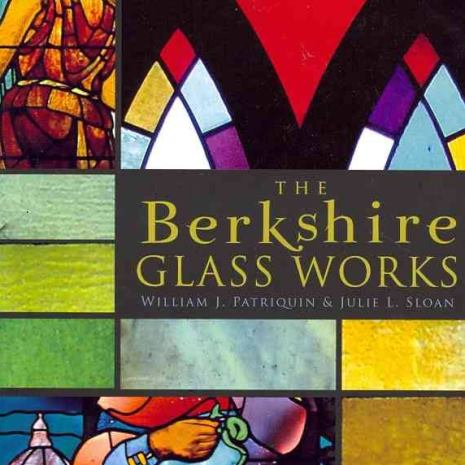Grace Episcopal Church - New York
New York, New York
www.gracechurchnyc.org
In 1991, the building manager of Grace Episcopal Church approached Julie Sloan about doing a condition study of the famous church's 55 stained glass windows. The church, an ornate example of High Gothic Revival architecture and the first by architect James Renwick, contains exquisite examples of English stained glass of the 1880s.
Condition Study
At the time of the request, Sloan was teaching one of her regular classes in stained glass conservation at Columbia University's Graduate School of Architecture. With the church's enthusiastic cooperation, she turned the church's wish partially into a class project. Her students performed the historical research and condition studies on the 12 aisle, 2 transept and one chancel windows, presenting their findings in an oral presentation to the church and as written papers to Sloan as a requirement of the course. Sloan completed the condition study herself, checking the students' findings, as well as doing the study of the three rose windows, 24 clerestory windows and windows in the Chantry and Honor Room, adjunct spaces to the church's sanctuary. The condition report, including the students' papers, was submitted to the church in the late summer of that year.
Condition Report
Based on the findings of the condition study, Sloan identified 14 windows in need of immediate restoration attention. Two of these were located in the aisle, and the remaining 12 were in the nave clerestory. The church decided to restore the two aisle windows in 1992-1993. They were "Jacob's Dream," designed by Mary Elizabeth Tillinghast in 1887, and "The Garden of the Resurrection," by an artist known only as Booker. "Jacob's Dream" was an especially interesting window; it is the only opalescent window in the church sanctuary, and until 1966, was the only American window. Mary Tillinghast, while today not well known, was at the time a respected, if youthful, stained glass artist and, for a few years, a partner of John La Farge. "Jacob's Dream" was her first independent stained glass commission; it was probably manufactured by the same studio that made La Farge's windows, the Decorative Stained Glass Company. Technically, the window was similar to La Farge's, although Tillinghast had her own style. Based on a Murillo painting, the window depicts the prophet Jacob asleep on the ground. Above him a ladder - on which angels approach - descends from heaven. Heavily jewelled and plated, the window was dark prior to restoration, although luminous passages - which awaited cleaning to be fully revealed - hinted at its true brilliance.
Specifications
For this project, Sloan wrote specifications and put the project out to bid. Interested studios were invited to submit samples of their work and to attend an interview with members of the church window committee. After completion of the interview process, studios whose experience and approach interested the church were invited to bid. The successful bidder was the Cummings Stained Glass Studio of North Adams, MA.
Restoration
One of the problems complicating the restoration of the windows was the deterioration of the stone of the building itself. Constructed of Tuckahoe marble, New York City's air pollution had wrought havoc on the stone, literally turning it to sand. The church retained an architect, Walter Melvin, to oversee the restoration of the stonework, which involved replacement of substantial portions of the window frames and tracery.
As part of their task, the architectural firm also designed the protective glazing for the restored stained glass windows. All of the church's windows had been covered with plate glass at some time during the 1960s. This glass had been set against the stained glass, allowing for no ventilation of the space between them. Over the years, accumulated moisture, which condensed on the glass and caming in cold weather, had begun to erode the stone and corrode the lead came. It is the church's plan to eventually replace all of this 1960s plate glass with the new system, which replaces the plate glass with laminated glass to prevent damage to the windows by vandalism. It is attached to the stone window frames by clips, eliminating the need for framing, which would have been extraordinarily expensive for these Gothic-traceried windows. The perimeter of the glazing is not sealed, providing ample circulation of air to prevent the build-up of condensation and moisture.
Sloan decided that both the Tillinghast and Booker windows required full releading to replace corroded and weakened lead came. The Booker window, a fully painted design probably of English origin, had lost several pieces in the past; these had been replaced by poorly selected glass of the wrong color. These pieces were replaced with glass of the original color, painted to match the original as well. In the Tillinghast window, the layers of glass had trapped vast quantities of dirt that obscured the transmission of light. After taking the window apart to replace the lead came, the glass was carefully cleaned. The restored window now glows with an intensity not seen in many years.
In 1995, the church proceeded to restore the remaining 12 windows on Sloan's First-Priority list, as well as seven windows on the second priority list. The Cummings Studio was again retained to perform the restoration of the nave clerestory windows, all executed by Charles Booth in the 1880s, and seven Honor Room clerestory windows by Genevieve and Maud Cowles, made in 1908. Sloan was hired to oversee the project, including specifications, which is presently underway [1996]. The windows were removed to the Cummings Studio, where Sloan visits at least once a month to review the progress of the work.
Supervision
In addition to these visits, the studio's craftspeople consult with her regularly and as needed to determine how to address specific issues as they are confronted. The Honor Room windows, for example, are heavily painted with unfired (cold) artists' oil paints. These paints are exceptionally fragile; dismantling the windows will cause losses in the painting. It is Sloan's responsibility to see that as little as possible is lost, and that in the event of losses, adequate documentation exists to recreate it. She will also determine the conservation procedures to be used in the preservation of the paint.






